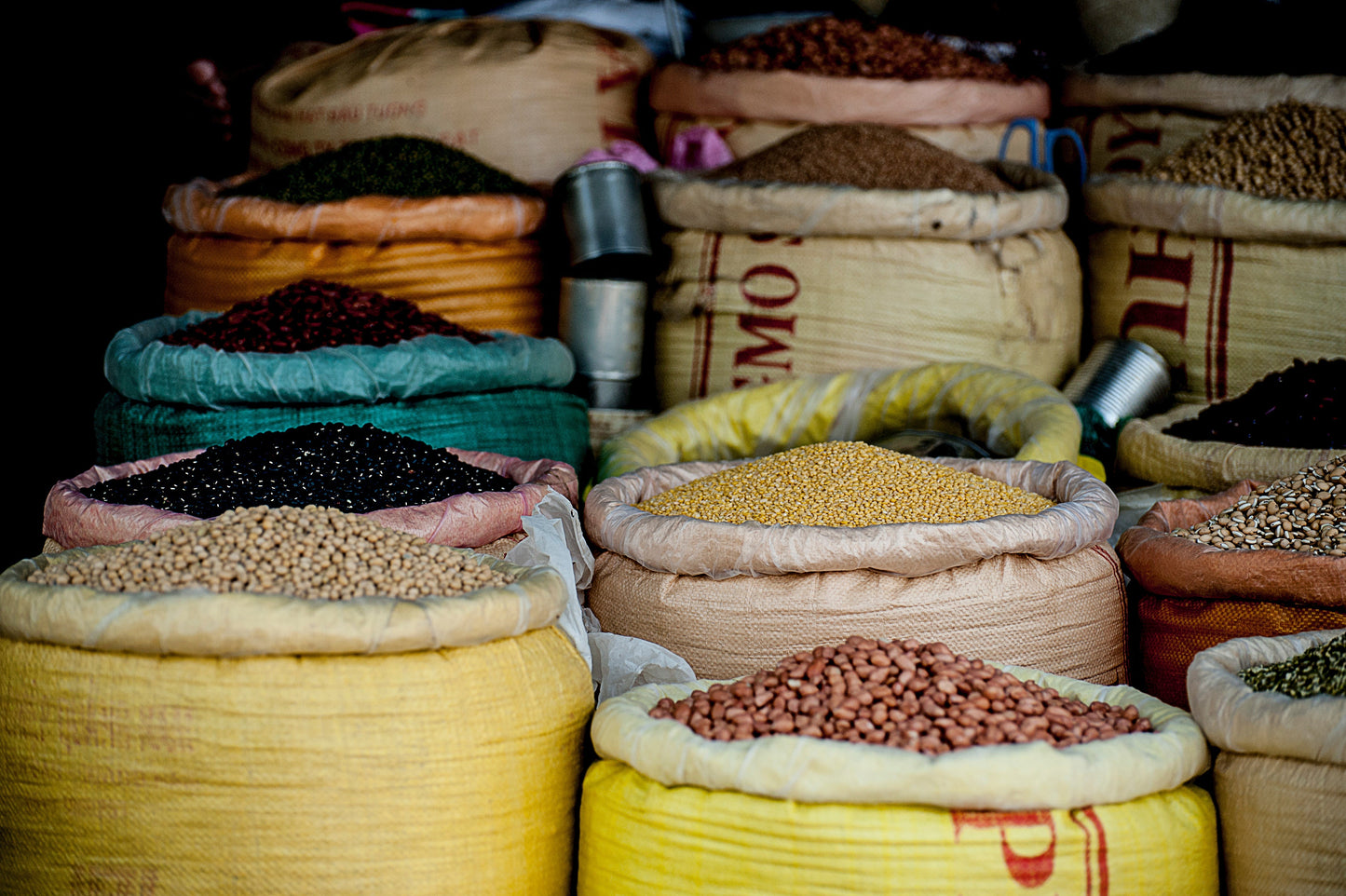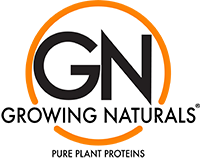
If you’re one of the nearly 23 percent of people in America who follow a vegetarian or vegan-based diet, you probably already know that going meatless means tons of health and environmental benefits. But did you know that those on plant-based diets require slightly more protein than their meat-eating peers? If you’re not a vegetarian, don’t let that scare you off. Read on to find out what may be stopping you from meeting your protein goal on a plant-based diet.
Plant-based benefits
First, let’s talk about the benefits of jumping on the veggie train:
- It’s good for the environment. Plant-based diets have the lowest carbon footprint of any diet, which means fewer harmful gases in the environment.
- Increased nutritional benefits. Vegetarian and vegan diets are heavy in fruits and veggies, which naturally have higher amounts of fiber, phytonutrients like antioxidants and vitamins and minerals. Not only that, but avoiding meats means less cholesterol and saturated fat in the diet.
- It’s healthy. Studies (like this one) have shown that plant-based diets can protect people from heart disease, some cancers, and other serious diseases.
Sounds great, right? It is, but with all the great things plant-based diets provide, however, there is one potential downside—you might not be getting all the protein you think you are.
Why vegetarians and vegans might not be getting enough protein
Let’s clear up a common misconception—vegans and vegetarians can get all the protein they need from plants. However, it’s possible that you might not be getting enough. Here are 4 reasons why:
1. You’re actually eating less.
Plant-based diets are great for weight loss. That’s because plants are low-calorie, high-volume foods, meaning you can get full without eating a lot of calories. In fact, one study showed that vegans and vegetarians lost more weight than those who included meat in their diets—but without calorie restriction. When you eat less, however, you may be compromising your protein requirements. For example, to get just 30 grams of protein (about the same amount in 4 ounces of lean ground beef) you’d have to eat over two cups of beans! Add that to a salad for a little variety and some extra nutrients, and it’s enough food to make you feel like you’re about to pop. This can be particularly challenging for active individuals who need more protein to fuel muscle growth and older people who typically have limited appetites.
2. Not enough variety.
Variety is the spice of life—and the key to a healthy plant-based diet. Sometimes, people who are just starting a vegan or vegetarian diet think it just means cutting out meat and animal products. People tend to fall back on staples like bread, cereal, pasta, mac n cheese, and other blah, bland foods. Not only do these foods have little protein, but they don’t have the nutrients needed to nourish the body for normal, healthy functioning. People who eat plant-based diets need to ensure they’re getting a variety of plant-based proteins, including legumes and lentils, whole grains, nuts, seeds, and tofu.
3. Allergies can limit food options.
An estimated 15 million Americans have food allergies. But if you’re cutting animal protein and products and have food allergies on top of that, your protein sources may be extremely limited—especially when common sources of plant-based proteins are also common allergens. Soy, for example, is a major source of vegan protein in everything from whole beans to tofu. It’s also one of the top 8 foods that make up 90 percent of all food allergies. For people who are allergic to the entire legume family (which includes most beans, lentils, and peanuts) even more plant protein sources are limited. Wheat is another common source of vegan protein—and another top 8 allergen. Not only that, if you follow a gluten-free diet, wheat products are also out of the question. And you may have noticed, gluten-free products aren’t exactly protein powerhouses.
4. Plant protein digestibility
The main reason you may not be getting enough protein as a vegan or vegetarian comes down to the digestibility of plant proteins. The true digestibility of a protein refers to how much of the protein you eat is actually absorbed by the body. (This is a scientific definition, not to be confused with subjective digestion, how well you feel you digested a protein). Animal proteins are highly digestible, meaning more than 90 percent of the protein you eat is absorbed by the body. Whole plant proteins, on the other hand, are less digestible, meaning you don’t actually get all of the protein you consume. Here’s an example of animal-based protein digestibility:
- The digestibility of eggs, milk, and beef are 97%, 95%, and 90%, respectively. So if you ate an egg, which has exactly 6.25 grams of protein, your body would absorb 6 of those grams of protein. Or, if you ate a beef hamburger patty with 30 grams of protein, you’d absorb 27 grams.
Now, compare that to the digestibility of black beans, a whole food plant protein:
- Black beans have approximately 75% digestibility. So if you ate a cup of black beans containing 15 grams of protein, your body would only absorb about 11 grams of protein.
There are a number of things that impact the digestibility of protein of plant foods, including fiber and lectins, which can inhibit the absorption of some of the protein and other key nutrients. Many supporters of plant-based diets argue that we humans should get all our protein from plants simply because some of the strongest, largest animals on the planet are herbivores, and if they can do it, so can we...right? Not exactly. Unlike our four-legged herbivore friends, we don’t have digestive systems that can digest and absorb protein from plants as efficiently. Humans don’t produce the enzymes needed to metabolize and completely break down nutrients like fiber. (On the flip side, not being able to break down fiber is actually a good thing—fiber helps lower cholesterol and promote healthy digestion and bowel function.) If we go back to the example of the digestibility of beans, which are chock-full of fiber, it’s not surprising they have just 75% digestibility.
What does that mean for vegetarians?
If you’re a vegan or vegetarian, don’t stress out. There’s no need to try and figure out the digestibility of every plant protein you eat. As a general rule of thumb, aim for about 10% more protein than the RDA recommends. For example, if you should be getting 90 grams of protein each day and follow a plant-based diet, aim for closer to 100 grams of protein. Below is a table of common plant-based protein sources and amounts of protein in them.  This sample plant-based meal plan versus a meat-based plan helps give you a better idea of the differences in volume and calories for the same amount of protein.
This sample plant-based meal plan versus a meat-based plan helps give you a better idea of the differences in volume and calories for the same amount of protein.
Plant protein powders to the rescue!
Even though the digestibility of whole plant proteins is somewhat limited, that doesn’t apply to protein powders. If you look at the table above, you’ll see that the amount of food required to reach your daily protein requirements is much greater on a plant-based diet. Sometimes, this can even lead to eating too many calories in an attempt to meet your protein goals. (Not ideal if you’re trying to lose weight!) Although whole foods should always be your first choice for protein over supplements, let’s face it—there are times when supplements like plant protein powders make it easier to reach your protein requirements. Here’s how plant protein powder can fill in the gaps:
- It provides the protein needed without the high volume of food. For most people, it’s easier to make a plant protein smoothie than eat 2 cups of beans!
- It fits into a plant-based diet. Most protein powders, like whey and casein, contain animal products. Plant protein powders are ideal for vegans and vegetarians.
- It's allergen-friendly. Double check your label, but most plant protein powders are free of top 8 allergens.
- It’s highly digestible. When plant protein powders are made, most of the starch and fiber from the peas and rice are removed. This concentrated protein is more readily available for your body to absorb compared to when it was in whole-food form.
- It’s convenient. With plant protein powder, there’s nothing to cook. It’s perfect for on-the-go, busy lifestyles. Bonus: it has a longer shelf-life than fresh produce, so you don’t have to worry about it spoiling within a few days.
If you’re on a plant-based diet, it pays to be an overachiever. By adding a little more protein in your diet, you can make sure you get all the protein your body needs.
Written By: Jill Overmyer
Fact-checked and Edited By: Scarlett Full, in-house Registered Dietitian
